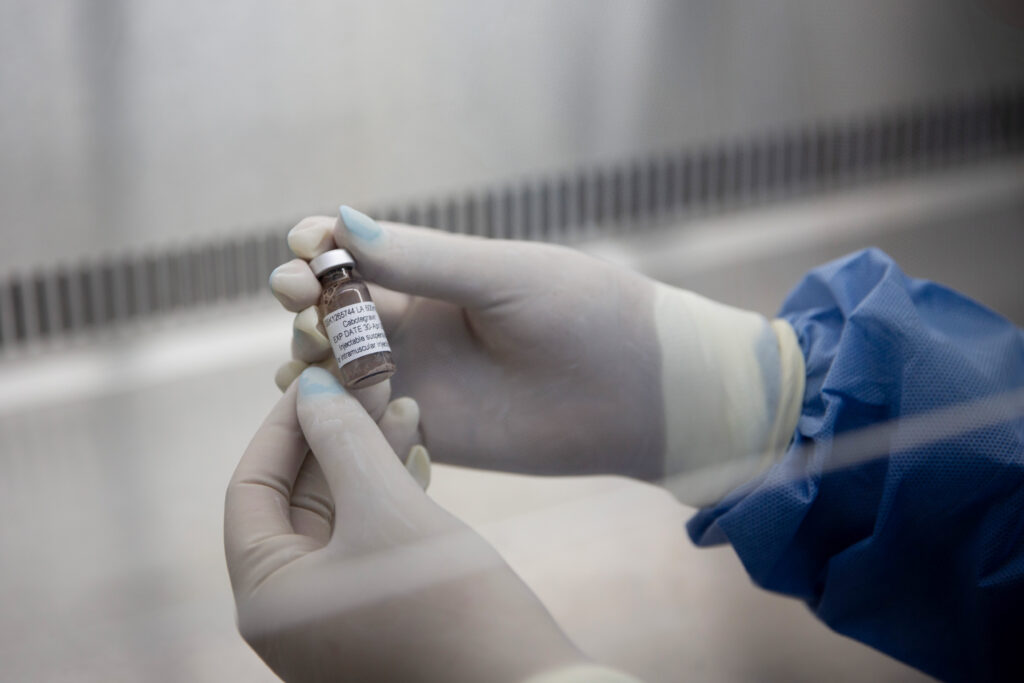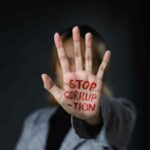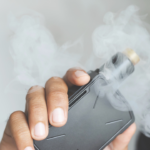- An epidemic such as Aids isn’t simply a disease gone viral. It’s a political, social, economic and human rights crisis, because the germ which caused the outbreak travels through a society comprising all these elements.
- Scientists have developed medicine that can control HIV in our bodies, turning it into a manageable, chronic disease. But inequality frequently prevents the drugs from reaching the people who need them most.
- Inequality is man-made, and exists because of government’s policy choices. It was a common theme at the SA Aids conference in Durban last week. We need to counter it with better policies, writes Mia Malan.
COMMENT
If you were a South African health journalist, like me, during the late 90s and early 2000s, you were mostly an Aids reporter. Eight out of ten stories you produced, would have been about the epidemic.
It was a time of unprecedented Aids-related deaths, government policy based on politics rather than science and activism that, in many respects, was as fierce as the fight against apartheid.
I was a cub reporter, with limited insight, for the public broadcaster then, but following HIV during a controversial time when the government refused to provide lifesaving antiretroviral drugs to people infected with the virus quickly taught me an important thing: a pandemic isn’t simply a disease gone viral.
It’s a political, social, economic and human rights crisis, because the germ which caused the outbreak travels through a society ravaged by inequality.
There’s nothing like a pandemic to expose what’s working and what’s not. Disease outbreaks are like magnifying glasses, they amplify everything — and our responses to such events are recorded.
HIV and our more recent pandemic, COVID-19, for example, laid bare that inequality didn’t just appear from some hidden realm. It’s man-made. As the head of UNAids, Winnie Byanyima, aptly put it in a recent webinar: “Inequalities are a policy choice. They are choices our governments make.”
Inequality, shows research, is one of the main reasons why we still see Aids-related deaths in an era where we have all the antiretrovirals, HIV prevention pills, vaginal rings, injections and harm-reduction plans we need to end the pandemic.
It was also one of the chief causes of so many unnecessary COVID deaths.
Why? Because inequalities, which we’ve normalised — such as women having less power than men, prejudice against gay and transgender people, making sex workers and drug users feel they’re not human enough to be served at clinics — frequently make it impossible to get lifesaving medicine to those who need it the most.
Getting scientists to develop medicine that cures an illness, prevents it or turns it into a chronic disease that can be managed with medication is, therefore, a relatively small part of the solution. The more difficult thing is to get the pills, injections, vaccines, whatever it may be, to people who need them — and to then use it.
ARVs work, but that doesn’t mean they get to everyone who needs them

HIV and COVID have shown us that just because there are pills or measures that science has proven can save lives, doesn’t mean everyone will take up the offer — people’s views on life, and their trust in the providers of such medication, influence their decisions.
During COVID-19, for instance, whether someone got vaccinated or masked up, had a lot to do with their political ideologies or religions. A 2021 study conducted by The Economist revealed that the single biggest indicator of whether Americans would get vaccinated was who they voted for during the 2020 elections: supporters of the Republican Party’s former United States president, Donald Trump were 18 percentage points more likely to shun COVID vaccines than those who voted for the Democratic Party’s Joe Biden.
And in South Africa, home to an estimated 7.9-million people with HIV, 94% of infected people have been diagnosed, but of those who know that they’ve contracted the virus, only 77% are on treatment, Health Minister Joe Phaahla, announced at last week’s South African Aids conference in Durban.
So, despite studies that show antiretroviral treatment (ART), if started in time, can increase an HIV-positive person’s life expectancy to almost the same age as that of uninfected people, 23% of diagnosed people in our country have chosen not to be on treatment.
For many of those untreated people, this is, however, not a deliberate choice; society or their living conditions made the choice for them.
Francois Venter, an infectious disease specialist and head of the health organisation, Ezintsha, points out: “We have testing available, and I think most people understand treatment is free and readily available and safe and effective. But things like denial, stigma, unfriendly services, and simply the hassle factor for people with busy and full lives, may all be contributing.”
Making people feel bad about themselves at clinics stops them from going there
Take stigma, for example. When researchers from Ritshidze, a group of organisations that represent people with HIV, asked transgender people, men who have sex with men, sex workers and injecting drug users in South Africa about how they’re treated at government clinics, less than half, and in some cases not even a quarter, of the over 9 000 respondents reported being greeted by a friendly face. In some of these groups, about one in five people said they’ve been blocked from getting health services.
[WATCH] How two women are changing the way trans women are treated
People from these groups, known as key populations, have a higher chance of getting HIV than the general population — but knowing that they will be discriminated against, they stop going to clinics altogether, James Oladipo, one of the Ritshidze report’s authors, told Bhekisisa in May.
To address this, the health department is now providing training to health workers to help them better understand transgender people, sex workers and men who have sex with men, so that they stop discriminating against those groups, the department’s acting head of HIV, Thato Chidarikire, says.
“[The curriculum] starts from the basics, from [people’s] reality. What we’re trying to [achieve is] to say, ‘Be sensitive, be competent.’”
Medicine is social justice work in a world riven by inequity
Solving inequality, says Byanyima, requires formal agreed-upon rules, in the form of policies — because we can’t control people or governments’ day-to-day decisions without it.
And because epidemics play out within societies with politics, and economic and social orders, the answer to putting a stop to outbreaks that thrive in the midst of inequality lies in creating policies to get these sectors to work together, rather than merely making available medication at hospitals and clinics.
The late American medical anthropologist and physician, Paul Farmer, who spent a large part of his career bringing high-quality services to poorer countries such as Haiti by fighting inequality, explained it well in an interview with the Boston Globe in 2008: “Medicine should be viewed as social justice work in a world that is so sick and riven by inequities.”
[WATCH] Tap, fire, PrEP: Check out the little blue pill that’s been missing from your Grindr game
So what do policy solutions to inequality look like?
We can learn a lot from the partnerships organisations in South Africa formed during our fight for access to HIV treatment, says Byanyima — to get the government to change its policy of not providing antiretroviral treatment in the late nineties and early 2000s, lawyers, scientists, doctors, economists, human rights activists, journalists and communities of people living with HIV joined hands to stand up to the state.
As a result, about four years into the battle, in 2002, the Constitutional Court ordered the then minister of health, Manto Tshabalala-Msimang, to provide HIV-positive pregnant women with antiretroviral drugs that could prevent them from infecting their babies, and in 2004 HIV treatment was expanded to the broader public.
As a direct consequence of that court decision, and the pressure it put on the government to make free HIV treatment available widely, the annual death rate among Black Africans, who make up the largest part of South Africa’s HIV cases, has decreased by 31% between 2006 and 2016 and the likelihood of someone reporting bad health is down by almost half. And in this case too, inequality has navigated the virus’ spread: studies have found that racist apartheid policies of “residential segregation”, of which the aftermath still restricts this demographic group’s access to health facilities, have strongly influenced this group’s high infection rate.
Uganda’s ‘draconian’ anti-gay laws will make HIV spread faster
But South Africa’s fight against inequality should extend across its borders, says the South African National Aids Control Council’s Steve Letsike. “Why are we [the government] bystanders when countries such as Uganda, Ghana, Kenya, Tanzania and Namibia introduce anti-homosexuality laws that seek to erase LGBTIQ+ people?” she asked at the Aids conference. “It undermines the health agenda. Injustice there means injustice where we are.”
In May, Uganda’s President, Yoweri Museveni signed the country’s anti-homesexuality Bill into law. The Act extends the possible punishment for certain types of gay sex from life imprisonment to the death penalty. The new law also creates new crimes such as the “promotion of homesexuality” and increases the prison sentence for “attempted same-sex” sexual relations to 10 years.
[WATCH] ‘Why do you want to be a woman when you are not’: Love, acceptance & HIV
“This Act is truly draconian and will lead to even more hate crimes and human rights violations against people who identify as LGBTIQ+ in a country where homophobia and transphobia is already rampant,” Letsike warns.
This legislation will, undoubtedly, also lead to fewer LGBTIQ+ people accessing HIV services, and many new infections.
Research in 10 sub-Saharan African countries found that gay and other men who have sex with men who lived in countries which criminalised same-sex sexual activities, were twice as likely to be infected with HIV compared to countries where it was legal. This increased to eight times more likely in countries with “severely criminalised” environments such as Uganda.
One of the main reasons for this group’s higher likelihood to be HIV positive in countries with anti-gay laws, is that it makes it difficult for people with same-sex relations to visit health facilities to get tested or treated for HIV, as they fear arrest if their sexuality is discovered by health workers. Byanyima, whose home country is Uganda, says the missing ingredient to fight inequality is the political will of countries to make “tough choices to invest in people to end Aids”.
Policies should be based on evidence of what works, not morals
Political will, and a tendency to allow prejudice and morals trump science.
For example: despite HIV treatment and prevention pills that can reduce someone’s chances of getting HIV through sex by 99%, Aids is still the leading cause of death among women in Africa (after maternal mortality), says UNAids. Yet many teen girls, who are about three times as likely to become infected as teen boys, live in countries where they’re not allowed to get tested for HIV, or to obtain contraception, on their own — they can only do so with parental consent.
Such “moralistic” laws, which are often intended to stop teens from having sex, frequently achieve the opposite. Research shows that in African countries where the age of consent for HIV testing is 15 years or lower, teens are 74% more likely to have been tested for HIV in the last year than in countries where the age of consent is 16 years or higher.
The policy choices governments make, and the values they use to make them, will determine how fast — or slow — we end inequality and the pandemics inequality fuels.
How inclusive we’re prepared to be in the end, will frame our future. We need to constantly remind ourselves of an important question that Farmer often asked: “If access to healthcare is a human right, who is human enough to receive it?”
Mia Malan is the founder and editor-in-chief of Bhekisisa. She has worked in newsrooms in Johannesburg, Nairobi and Washington, DC, winning more than 30 awards for her radio, print and television work.








